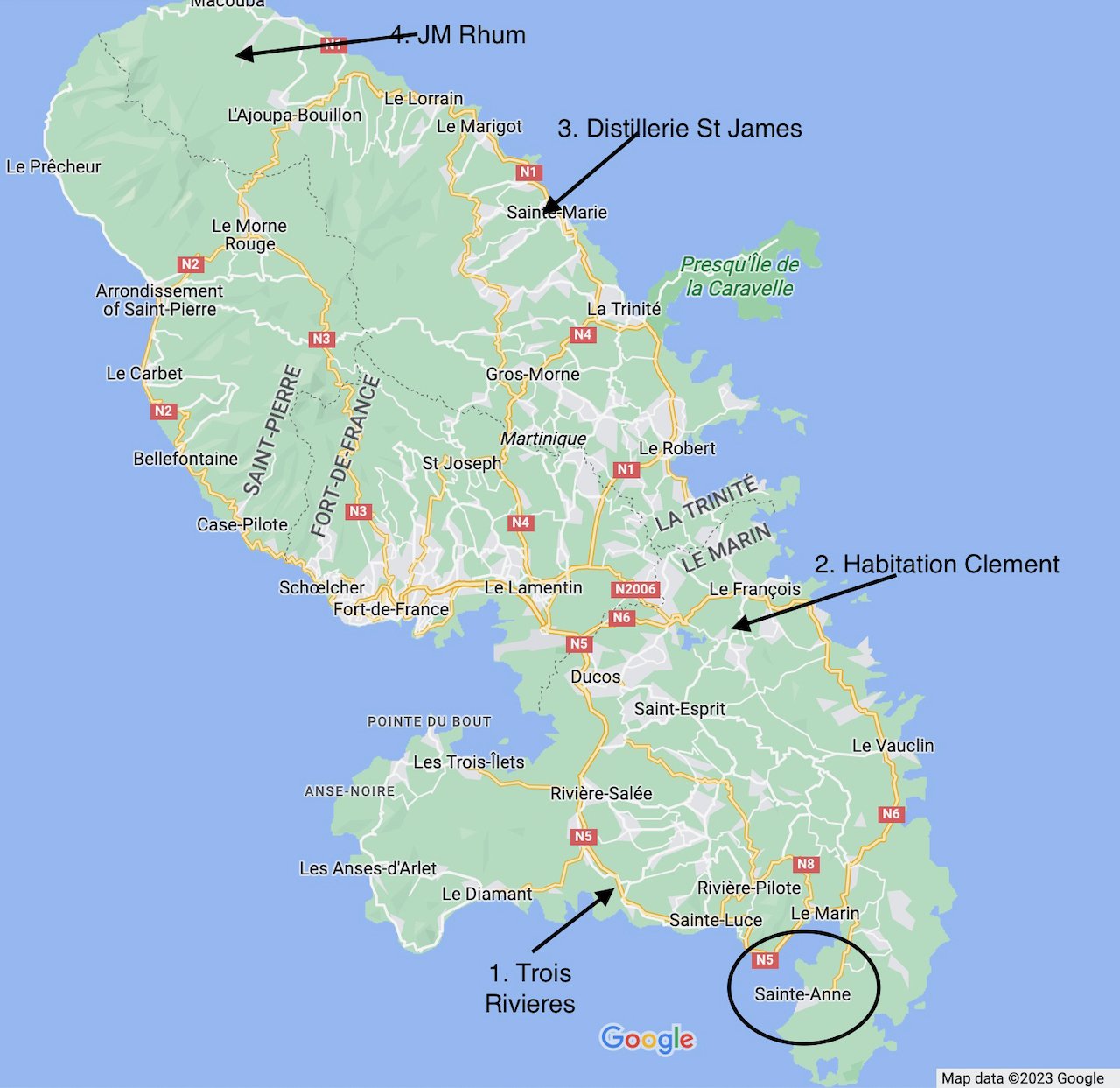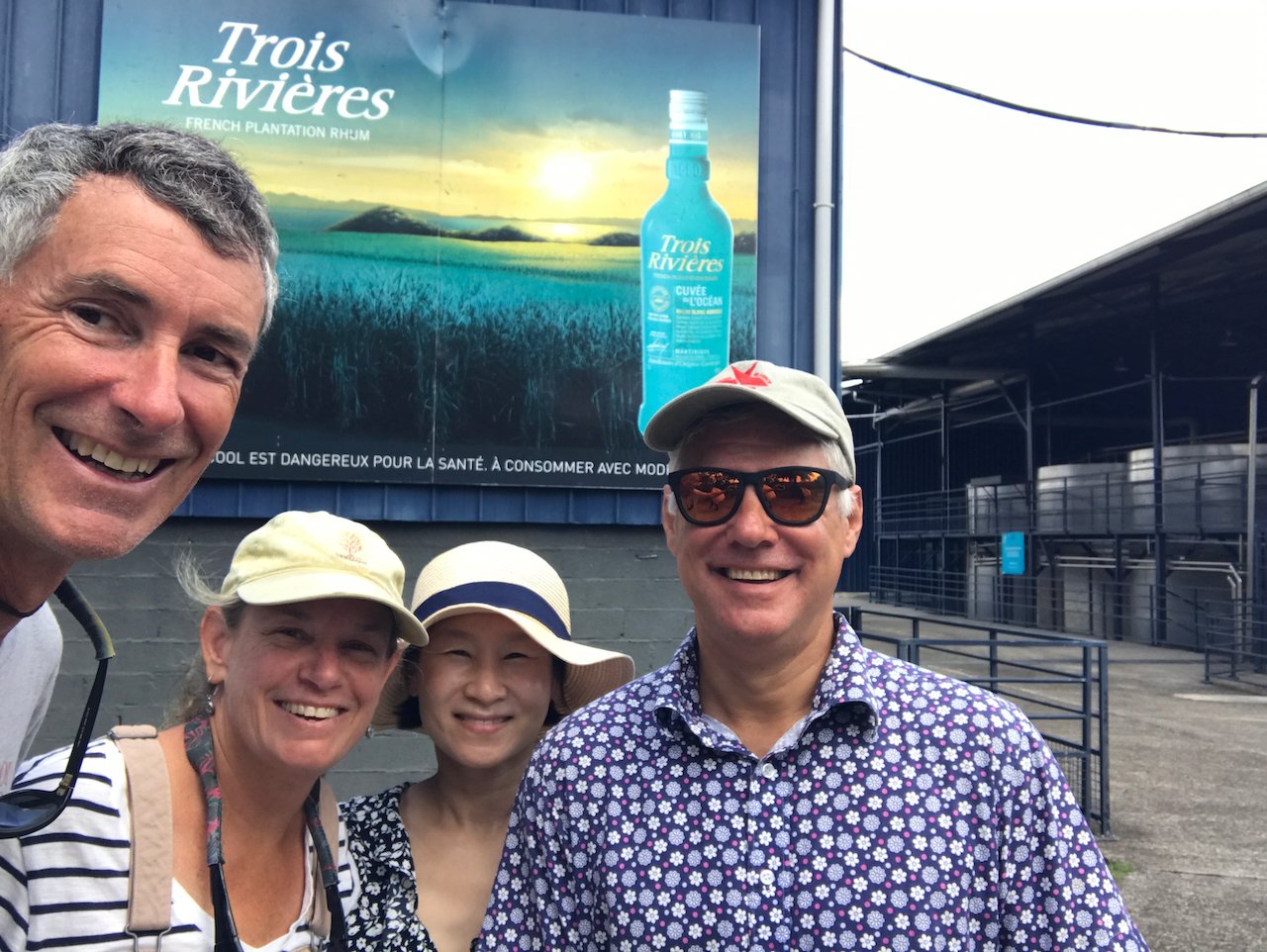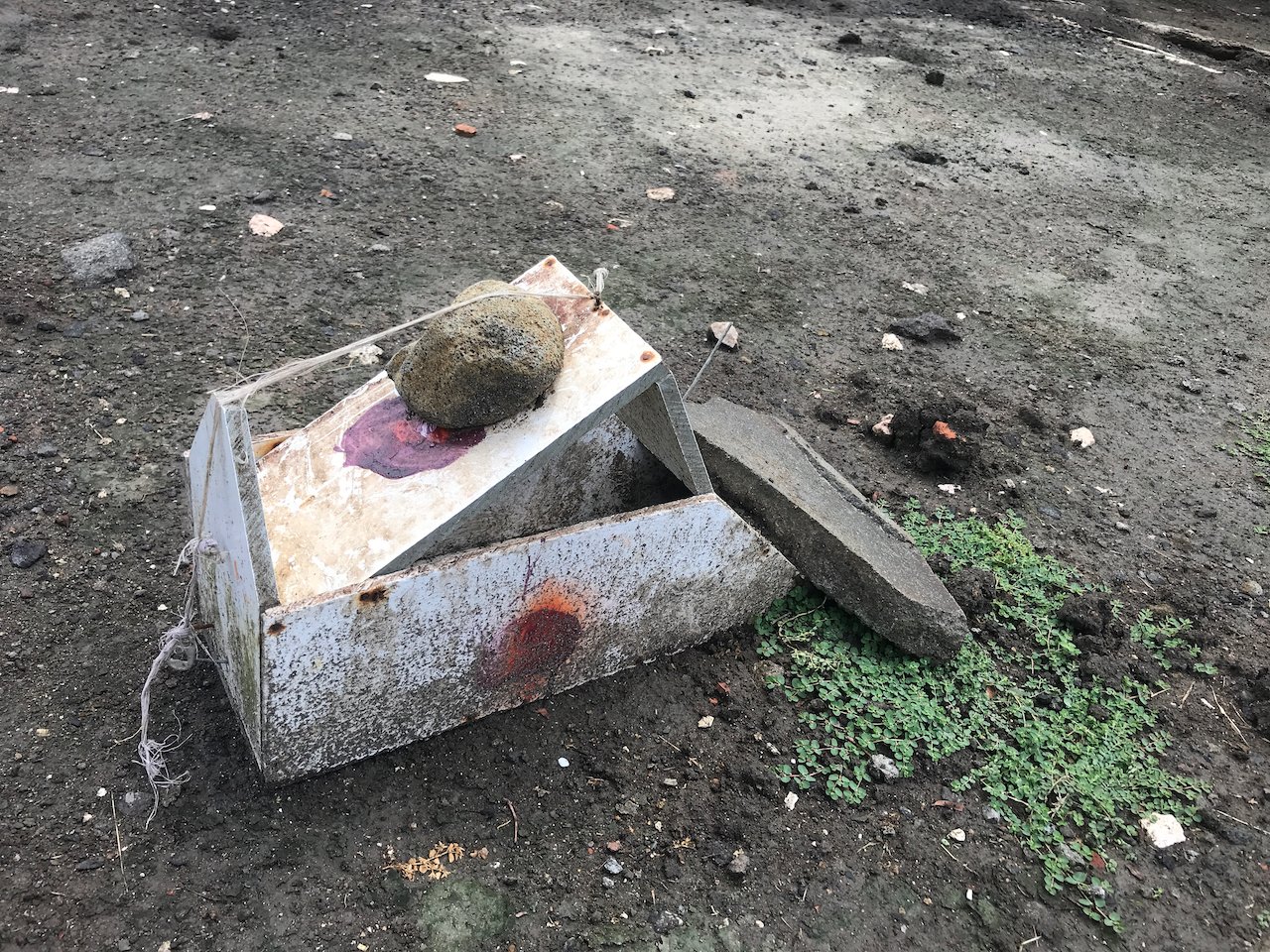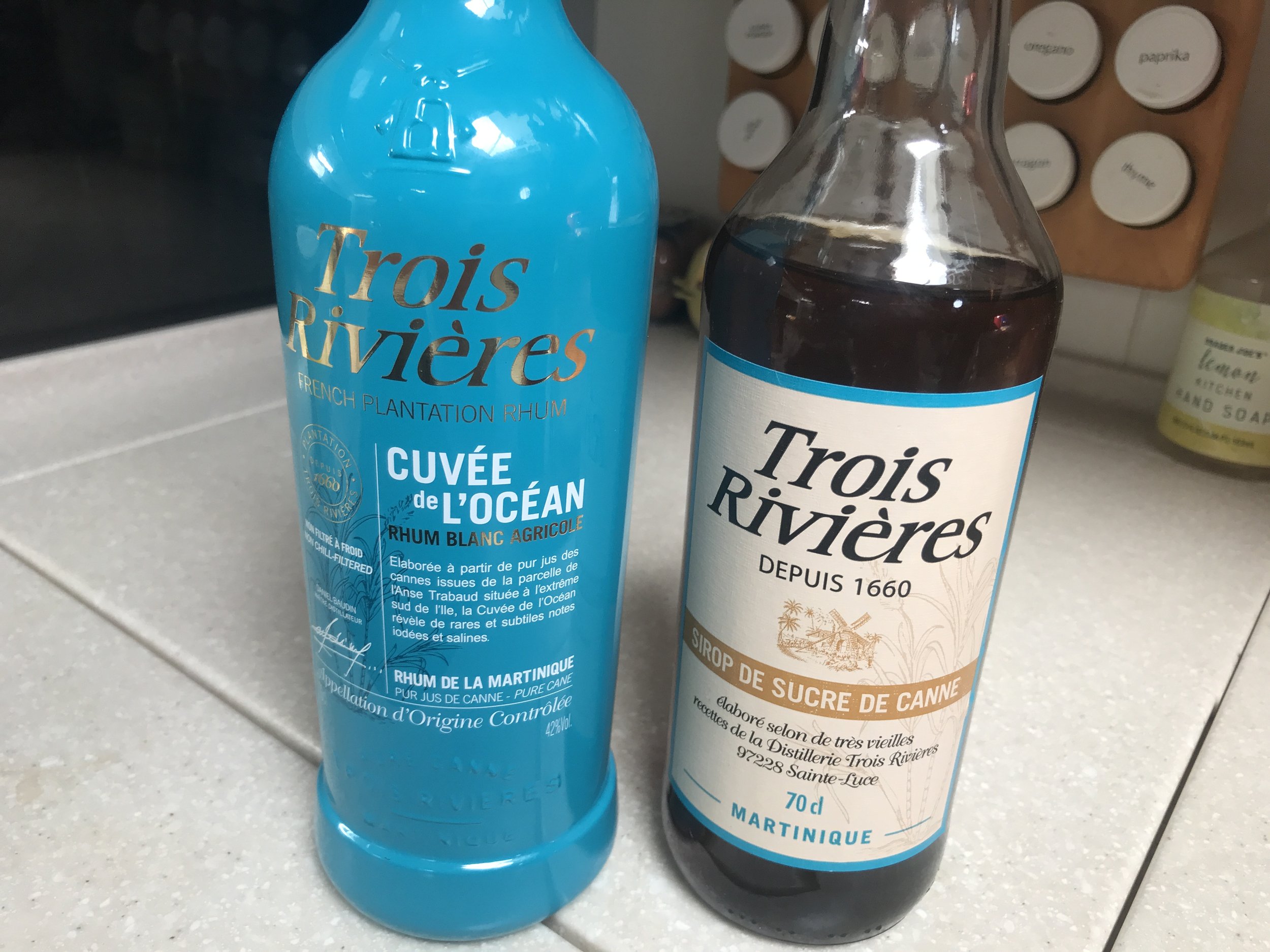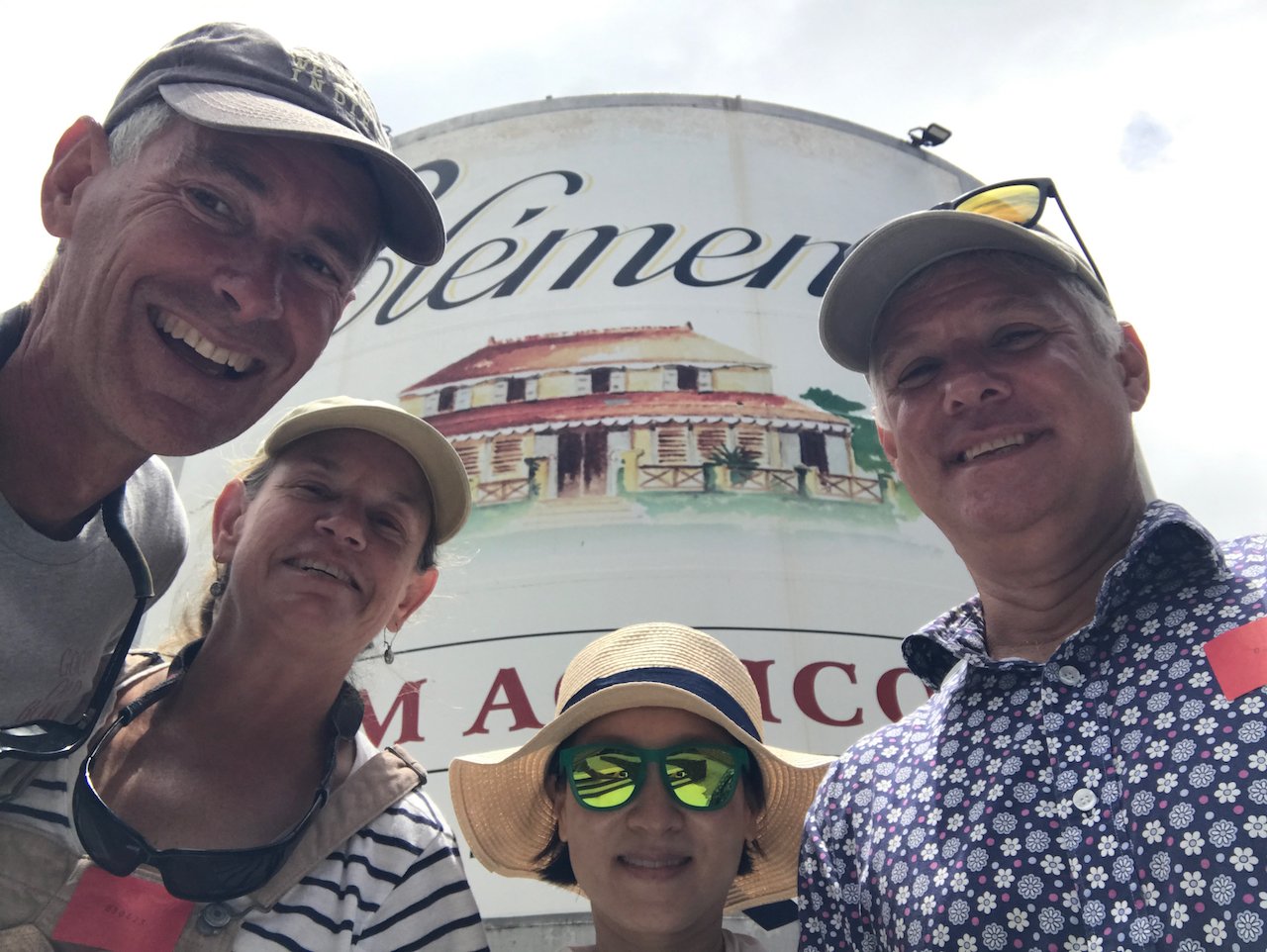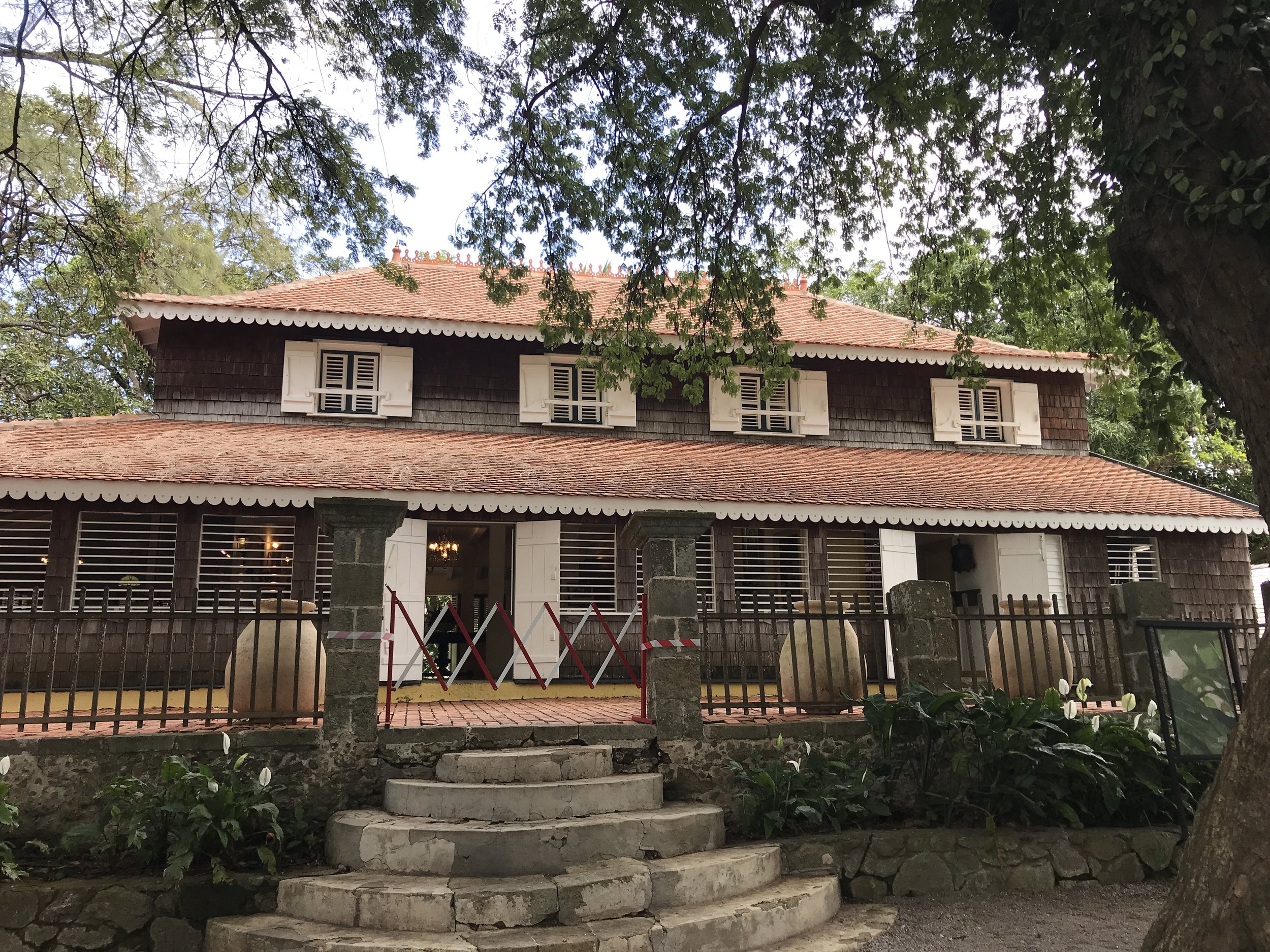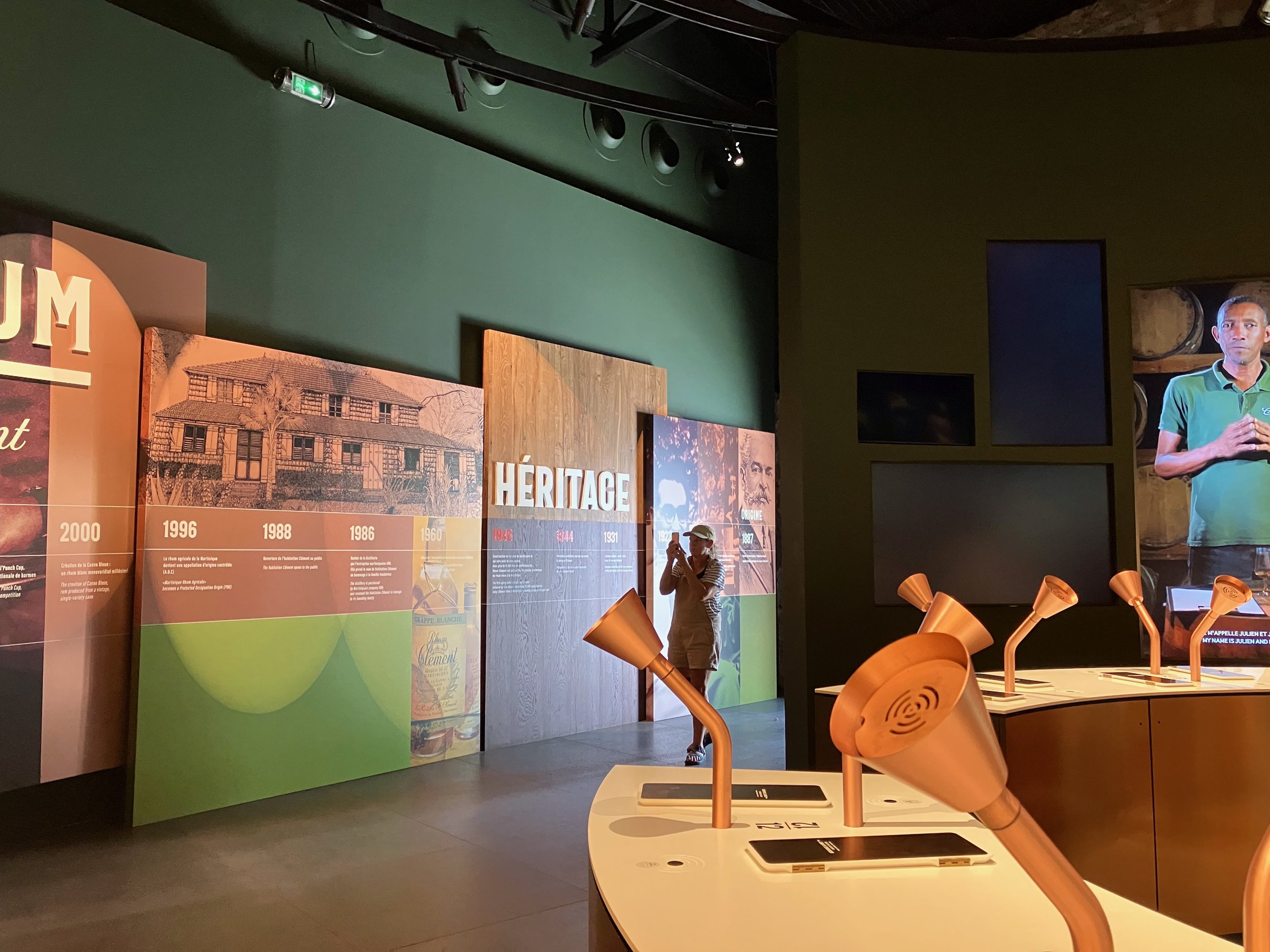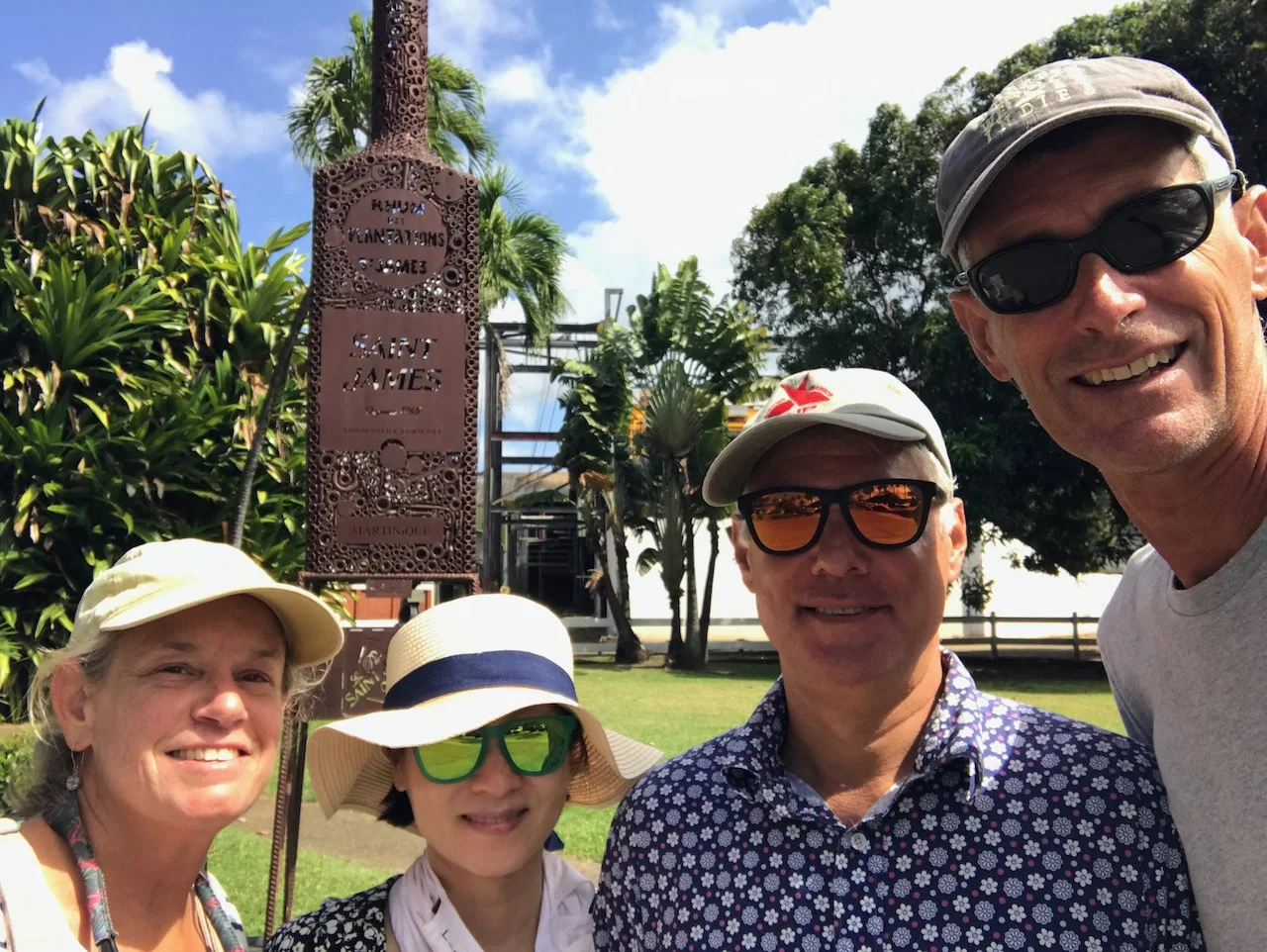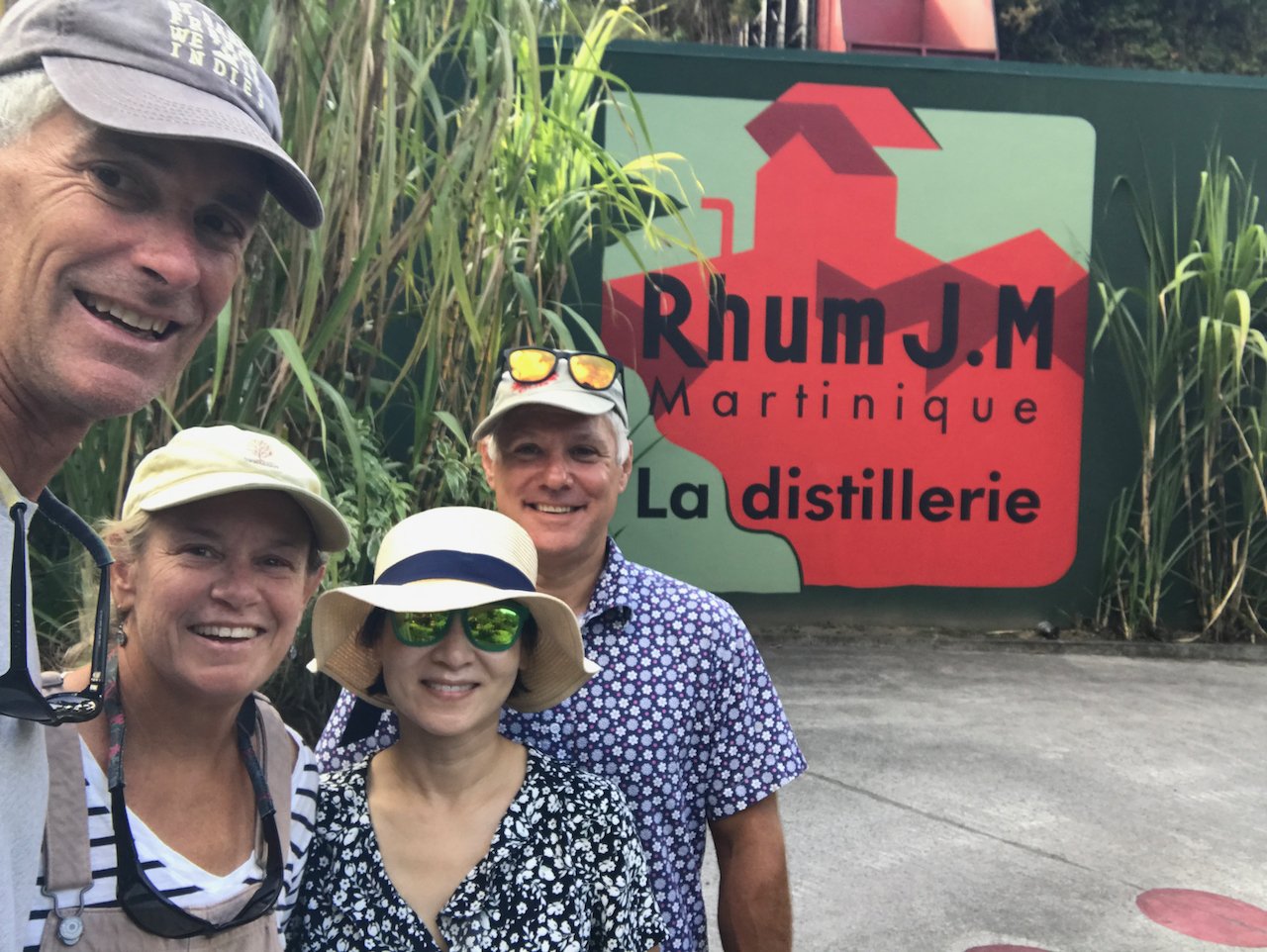Martinique, the Bottle Tour
(title courtesy of Jamie on Enki)
It took us a while to get our rental vehicle chops on during this cruise, which I’m dubbing the 6000 mile shake down. Once begun, though, it’s continued with a vengeance. A car in Marie Galante. A scooter (electric!) in Les Saintes. And now, a 2-day affair in Martinique. What can we see in 2 whole days with a car!
The plan for day 1 was cooked up one sundowner evening with Jamie and SunYoung from Enki. Jamie is a huge fan of rhum agricole, which is made from fresh sugar cane juice instead of molasses. He used to collect bottles of the stuff even when living in Taiwan - apparently the party when he moved to the States (unable to bring it with him) was epic. I can only imagine. He’s made it his mission to make converts of us. Since our less-than-charitable reaction to rhum so far is “rocket fuel”, he’s got his work cut out for him.
Rhum casks for sale at a distillery on Marie Galante
The best rhum in the world is arguably made in Martinique. It even has its own AOC - Appellation d’Origine Controlee, which means that this rhum was produced in a specific region and exhibits a specific quality and style. You might have seen this designation with wine? I’m not sure any other rum (or rhum) in the world has such a pedigree.
Martinique. 410 square miles. 11 (or 12, or 13) distilleries. One car, 4 people. How many distilleries can we visit?
Base image from Google Maps
We quickly decided on the most important ones to see, then a secondary list in case we had extra time. “No point in a forced march,” pointed out Jamie, wisely. We hadn’t quite planned on massive traffic as a sticking point, and in hindsight starting the day from Sainte-Anne toward the marina/boatyard area known as Le Marin wasn’t ideal. The town is in the process of switching over all the one-way roads WHILE there’s some major road repair happening. The combination routed everyone who wanted to get on the main road to the city of Fort de France through small streets and through a stop. Oof.
Lots of time sitting in traffic to er, appreciate this wall
Still. A picnic lunch (finally!) in hand, we set off for distillery #1. Trois Riviere, not one of the larger or well-known ones. The entrance was kind of abrupt, right off the highway and onto dirt. We parked and got out, noting the not-in-operation equipment but missing (somehow) the sign that told us to buy a ticket for the tour in order to see the machinery. Nobody yelled at us, and no, we didn’t buy a ticket for a tour. There were lots of traps underneath calabash trees, hoping to lure land crabs in. We couldn’t figure out how the traps were tripped . . . Our tasting host was enthusiastic and friendly, pointing out which rhums could be mixed for Ti Punch*, and which ones were for “gustation ONLY!”. We came away with a bottle of sirop de sucre de canne, the smoky sugar cane syrup that’s one important ingredient in Ti Punch as well as a bottle of the first rhum we tried, the “Cuvee a L’Ocean”. It was a step up from rocket fuel, I will say that. The bright blue color reminds me of a Tiffany box.
To the right is the old distilley. We found out after we wandered through that access was by ticketed tour only. Oops.
Traps for land crabs
Trois Riviere haul
Next up was Habitation Clement, a renowned distillery with soothing, park-like grounds. We reluctantly forked over 13 Euros each to be able to access the botanical-cum-sculpture-garden grounds, the defunct distillery, and the old plantation house: we decided to think of it as paying to enter a museum and it somehow felt better. This location hosted a high level summit between Francois Mitterand and George H.W. Bush back in 1991. Imagine a meeting in 2023 between 2 heads of state on a small island, at a distillery no less. Echoes of a time long gone, I think. The sculpture garden housed strange art installations along a well-manicured path. The house offered a glimpse into the life of the rich and well-heeled (supported completely by the labor of enslaved peoples). And then came the tasting room.
Jeremy is the selfie master. Long arms help!
Pretty house with gorgeous furnishings
Maybe better described as the precursor to the tasting room, even though it was called “Degustation”, this room was worth every penny of the admission price. Lit in a way that was reminiscent of a high-end jazz bar, the centerpiece was a curved table with 12 copper-colored vase-shaped pipes. Next to each of these was a button: press the button with your nose in the vase, and a puff of scent came out. Smell O Vision! Each had a different flavoring that goes into the rhums; next to each one was an openable “book” that told what the flavor was, which rhums used that flavor, AND a recipe card! We sampled each one, calling each other over with excitement, picking up each and every recipe card. And that wasn’t even all there was to see in this room! There were tastefully designed displays about the history of the distillery. Short videos introducing the different bartenders and their favorite recipes. And even, on the way out, a wall of rhum bottles. WOW.
Panoramic photos have some weird effects when people are in them! You can sort of see Jamie’s delight . . .
The tasting itself was a bit of a let down, frankly. The guy who did ours was bored, checking the time on his phone endlessly and talking to colleagues rather than engage with us. Not much information offered or enthusiasm about the rhums he was pouring. Maybe it was because he spoke no English and our French is rudimentary at best? Fluent Jeremy is normally our ace in the hole for this challenge. We weren’t super impressed by the rhums or the tasting experience, though we did buy one white and one rhum vieux.
Now it was almost 1 pm. We still hadn’t had lunch, and still had 2 more spots to go. Forced march? No, we told ourselves. We’d taken an extra long time at Clement. The next ones wouldn’t take so long. Off we went.
Lunch break. Cheese, wine, sauscisson, and baguette. Standard!
Stop #3 (the picnic table overlooking the water, just off the highway, complete with feral kitties looking for a handout, doesn’t count): St James Distillery. This one was absolute tops on Jamie’s list as he loves these rhums. The first new experience was that this is (gasp) a WORKING distillery, a complete contrast to both Trois Riviere and Clement. Steam billowed, the smell of fermenting cane juice hung in the air, and trucks moved with purpose around the property. The bar tasting counter itself felt like a neighborhood hangout. As opposed to the first 2 places we went, where high end Parisian fashion was on vivid display, this one was frequented by locals wearing t-shirts and jeans. Lots of talking, laughing. Offers of making Ti Punch as part of the tasting. We saw lots of buying happening, too. The distillery was a bit of a let down as we weren’t allowed anywhere near the working facility, but the museum-like display of shiny copper stills was pretty cool. The tasting was helpful enough, but we clearly weren’t regulars and this was to our disadvantage. This is the only place where we didn’t buy anything. (Unfortunately the very cool Ti Punch glasses were out of stock.) At this point we felt like we had enough rhum agricole to keep us occupied for the next few years: besides, if when we got back to the boat we changed our minds, you can buy this stuff in every grocery store and convenience store in Martinique.
The bronze sculpture has the name of the distillery. I promise!
It was on to what we all agreed would be our last stop, Rhum JM. We wound our way off the highway for the first time all day, passing cows and sugar cane fields and a whole lot of banana plantations. We had just started looking at each other, wondering if we’d missed a turn (we were in the middle of absolute nowhere) when the road curved among towering jungle trees and a huge red sign proclaimed “RHUM JM”. We’d arrived.
So cool
The setting for JM is insane. Note the old machinery at the base of the palm tree.
What an arrival. Like at St James, this distillery was in operation. Steam hung over the dense jungle: the sugar cane atmosphere was so thick we all joked about being able to taste it on our skin. “Who knew we were saving the best for last!” said Jamie. The setting was spectacular, lush green foliage overhead, bright flowers at eye level, and a picturesque river below. They use the water from the river for the rhum. The tour, a self-guided one helped along by a map Jeremy picked up at the welcome center, took us everywhere, from the active crushing section to the bubbling fermenting vats and everything in between. We watched with fascination as the steam turbine whirled around. There was a rudimentary version of the smell-o-vision (we wonder if this was where the idea came from) that involved taking the top off of a round glass container. The tasting itself was friendly and informative, with no pressure to rush through even though it was close to the end of the day. We bought a bar mat that has already come in far more handy than we expected, as well as 2 tasting glasses that are more for sipping than Ti Punch: I’m not actually sure how much we’ll use them.
I was surprised at how different each spot was, and how different each rhum was. It still largely tastes like rocket fuel to me (there were some that I didn’t even taste after smelling them), but I will admit that some burn less than others. I’m not sure we need to visit the other 7 (9?) on the island, but it is a good way to focus an island exploration. Along the way we saw the east coast, the mountainous interior, the city. It’s amazing how much is packed into a relatively small piece of land!
We got back to the boats a bit later than we’d wanted to, getting to the dinghy dock just past sunset and using our phones as flashlights. It was incredible how tiring a day in the car made us all.
Bar mat doubling as a tool holder
PS. Our friend John, on Ave Del Mar, pointed out that Brazilian cachaca is in effect a rhum agricole, as is Barbancourt rhum from Haiti. We love Barbancourt (but think rocket fuel is an apt description for cachaca, no matter how yummy a good caipirinha is) so perhaps there is hope for our relationship with sugar cane spirits.
*Ti Punch is the local cocktail. A combination of rhum agricole, sirop de canne, local lime, and (maybe) some water or a big ice cube. It may be the best way we’ve found so far to enjoy rhum agricole. Like with other special cocktails, there are glasses specifically for Ti Punch.


